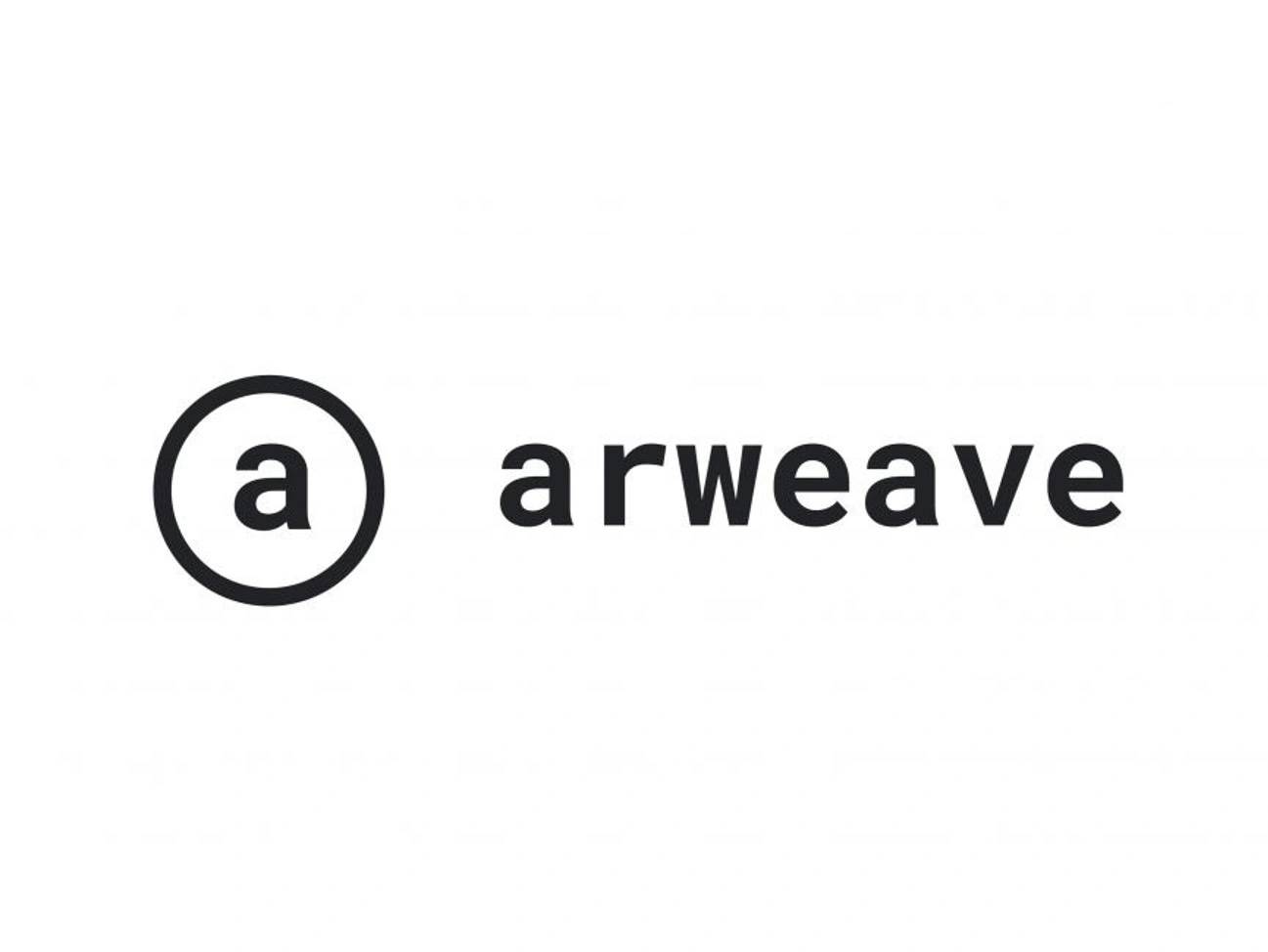订阅 wiki
Share wiki
Bookmark
Arweave
Arweave
Arweave 是一个用于网络存储的去中心化协议,使用户能够将数据永久存储在区块链上。它的存储机制提供了一个全球性的、永久的硬盘,为用户和开发者提供安全和永久的数据存储解决方案。Arweave网络的原生加密货币是$AR,用于激励网络中的参与者。[1][21]
历史
Sam Williams 和 William Jones 在肯特大学攻读博士学位期间共同创立了 Arweave。根据 Williams 的说法,他在苏格兰爬山时想到了这个想法,并将其带给 Jones,Jones 帮助他处理了技术细节。他们于 2017 年 6 月 28 日为该项目成立了一家技术公司,最初名为 Archain。[2][3][22]
2018 年 2 月,公司名称更改为 Arweave,Arweave 主网于 2018 年 6 月启动。Sam Williams 担任公司首席执行官。[3][22]
2019 年 11 月 6 日,Arweave 在由 Andreessen Horowitz 领投,Union Square Ventures 和 Multicoin Capital 参投的种子轮融资中获得了 500 万美元。在 2019 年 3 月 5 日的另一轮种子轮融资中,由 Andreessen Horowitz 领投,Coinbase Ventures 参投,他们总共筹集了 800 万美元。[22]
首次代币发行 (ICO)
Arweave 的 ICO 于 2018 年 6 月 3 日开始,并在 4 天内筹集了总计 8,700,000 美元,由 Arrington XRP Capital、1kx、Benjamin Kong 和 Coefficient Ventures Grand Renfield One 支持。当时,$AR 代币的价格为 0.73 美元,总供应量的 20.6% 可用于该轮融资。[6]
在此之前,Arweave 在 2017 年 8 月举行了一次代币预售活动,其中售出了最初生成的代币供应量的 10.8%,并在 2018 年 5 月和 2018 年 6 月完成了两次公开销售,分别售出了供应量的 7.1% 和 1.1%。该公司还为私募分配了额外的 19.5%,为项目顾问分配了 2.9%,为团队分配了 13%(受五年锁定期限制,每年释放 20%),为生态系统开发分配了 19.1%,为未来项目使用分配了 26.5%(受五年锁定期限制,每年释放 20%)。[19]
技术
Arweave 是互联网的补充系统,使用 区块链 方法永久存储数据,这些数据无法更改,并使用代币激励来实现可持续性。为了实现其去中心化存储目标,并解决当前区块链问题,如可扩展性、性能缓慢和高交易费用,它引入了包括 BlockWeave、访问证明、Wildfire、BHL、WL 和 BlockShadows 在内的技术。这些技术点相互补充,形成了 Arweave 的解决方案。[11]
BlockWeaves
Arweave 构建在一种名为 BlockWeaves 的核心技术之上,其结构与传统的区块链(如比特币)不同。在典型的区块链中,包含交易的区块线性链接以形成链。然而,在 BlockWeave 网络中,一组包含数据的区块链接到多个先前的区块,从而创建了比链更像数据结构的结构。[10]
在 Arweave 网络中,每个区块都链接到两个先前的区块——链中的前一个区块和区块链先前历史中的一个区块,称为“召回区块”。这创建了一个更复杂的图结构,称为区块编织,而不是线性链。“召回区块”的选择由前一个区块的高度和前一个区块的高度决定,从而产生一种确定性的方法。然而,从编织的区块历史中选择区块是不可预测的。[10]
访问证明
Arweave 使用的共识机制是访问证明 (PoA) 和工作证明 (PoW) 的组合。在典型的 PoW 系统中,下一个区块仅基于前一个区块生成,但使用 PoA 算法,来自前一个区块的数据被组合以随机选择一个召回区块。通过获取当前区块的哈希值并计算其相对于当前区块高度的模数,可以选择一个召回区块以合并到下一个区块中。这种方法的优点是不需要矿工存储形成区块链的所有区块。[10]
升级到 SPoRA
2021 年 2 月 24 日,Arweave 网络升级为使用 Succinct Random Proofs of Access (SPoRA) 共识机制。它是一种共识机制,在区块 633720 之前,Arweave 一直在运行访问证明 (PoA)。区块 633719 是 Arweave 网络上升级前的最后一个 PoA 区块,挖掘的第一个 SPoRA 区块是 633720。[12]
此升级是为了使数据检索更具竞争力,并减少维护网络所需的能量。SPoRA 的架构需要更少的能量来维护,这不仅降低了矿工的开销,而且提高了整体系统的效率。[12]
BlockShadows
这项技术的目的是加速共识区块的传播。传统的区块链受到区块大小的限制,但 Arweave 开发了 BlockShadows 来解决这个问题。当创建一个新区块并准备好广播时,它会广播完整的区块内容以及一些必要的信息,其他节点可以使用这些信息来创建新区块。这使得区块的传播更快、更灵活。
钱包列表 (WL) 和区块哈希列表 (BHL)
借助两个关键概念:区块哈希列表 (BHL) 和钱包列表 (WL),节点可以在不拥有整个链的情况下执行关键的网络功能。BHL 是所有先前区块的哈希列表,而 WL 是系统中活动钱包的列表。这允许用户在不占用先前交易中使用的区块的情况下验证交易。通过网络同步并可供矿工下载的区块链列表和钱包列表,节点几乎可以立即加入网络并参与其中。[10]
Wildfire
Arweave 开发了一种名为 Wildfire 的自组织网络分析和排名系统。Arweave 是一个数据存储系统,可以保存大量信息并提供对其的便捷访问。为了简化数据共享,Wildfire 增加了一层激励措施,以鼓励矿工自由共享数据。这确保了矿工有动力尽可能快地与其他矿工存储和共享数据,这反过来又为他们赢得了良好的声誉。Wildfire 在每个节点本地创建一个排名系统,其中每个对等方都按其性能进行排名,并且整个网络会将性能不佳的对等方列入黑名单。[10][11]
内容审核
Arweave 协议提供了一个黑名单系统,该系统授予节点选择他们想要存储的内容的自由。该系统允许任何节点将个人或一组节点可能想要拒绝的任何内容列入黑名单。例如,他们可以将他们不希望存储的某些数据的哈希或字符串列入黑名单。任何匹配的磁盘内容将永远不会被写入。当超过一半的网络拒绝特定内容时,它将在整个网络中被拒绝。这些黑名单可以单独或协作创建,也可以从其他来源导入。[10][23]
Permaweb
2019 年 1 月,Arweave 推出了 PermaWeb,这是一种新的网络或互联网形式。Arweave 将 Permaweb 描述为:
“…一个全球性的、社区拥有的网络,任何人都可以为其做出贡献或获得维护报酬。”
PermaWeb 在全球分布式和无服务器网络上提供激励和信息永久性。它是用户可以使用和运行的网络。它看起来就像传统的网络,但不同之处在于 PermaWeb 上发布的任何内容都是永久可用的。上传到 Arweave 的所有内容都需要使用 AR 代币支付。这也是矿工在他们的服务器上托管数据所获得的报酬。[13]
激励
PermaWeb 使 用 户能够存储信息并构建永远存在于智能区块链上的网站。由于 Arweave 网络本身对其内容持怀疑态度,因此 PermaWeb 可用于存储各种信息——从维基到 PDF,再到视频和 Web 应用程序。一旦包含在网络中,这些文件就可以随时随地从世界上的任何地方访问。此外,一旦提交,任何人都无法以任何方式更改它们(包括其原始上传者),从而增强了应用程序的消费者完整性和文档的可验证性。[13]
$AR 代币
AR 代币是 Arweave 平台的原生代币。代币的主要单位是 AR,子单位是 Winston,其中 1 AR = 1,000,000,000,000 Winstons。Arweave 代币 (AR) 的总供应量为 66,000,000 AR。5500 万 AR 在 2018 年 6 月 8 日网络启动时的创世区块中创建。[19][24]
$AR 代币用作在系统上存储信息的付款。这些付款将奖励给参与信息存储和维护的矿工。该代币还用作价值交换的手段。为了在区块上进行交易,用户必须支付 AR 交易费用。与传统的区块链系统不同,此交易费用不会直接转移到区块的矿工。相反,大部分交易费用被分配给存储捐赠基金,该基金会随着时间的推移逐渐分配给矿工的钱包。[19][24]
发现错误了吗?
